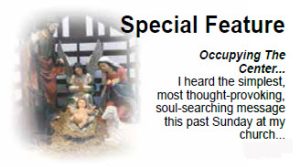 By: Eric Betts
By: Eric Betts
How well can you articulate the dream, the vision, and the values of the organization you lead? More importantly, how well are your co-workers and subordinates able to articulate what the company they work for is all about? It is not enough to know what the functions of the company are and what it produces, but what impact or legacy the organization seeks. In many cases, the leaders and co-workers are clueless about what the company actually stands for and the values it holds dear. Jim Collins, a leadership expert, has written quite extensively on the subject of “Good to Great.” Collins maintains that in order for a company to arrive at a level of greatness, the leaders and workers must buy in to the purpose and values of the organization. They must also have more ambition for the company than their own personal success. Collins’s theory states, “Take care of your career and your career will take care of you.” The idea is that when everyone is on board with the mission, success will follow at all levels. Collins concludes that in order to go from good to great, both the driver (the leaders) and the passengers (co-workers, volunteers, or employees) must have the right mindset and harmony of vision and direction. There must be the right driver and the right passengers.
What makes a driver (leader), the right driver and by extension a successful driver? What characteristics will the driver possess which will inspire and guide the passengers (employees/volunteers)? The driver must have humility. This means the leader knows where their abilities end and where others begin. They understand the role that luck and chance has played in their success as much as they understand how their skill has contributed. Humility means they are always looking to assign credit to others and not quick to blame. They are willing to critique themselves and welcome the critique of others. Leaders who go from good to great do not need to motivate their co-workers; they only inspire. Motivation and inspiration are quite different. The need to motivate shows a reluctance on the part of the unmotivated to begin or complete a task. This is not the case in a good-to-great situation. The passengers are already interested and eager to begin and complete the assignment. They do not need to be told what to do; they already understand what to do, and act accordingly. Inspiration represents the ability of the leader to encourage the passengers in the work that they have already begun and are showing signs of an excellent completion.
Good-to-great leaders are nonreactive, but are able to respond to crisis situations with calm resolve and steady determination. They do not panic, nor do they allow fear or negative emotions guide their decision making. Additionally, they do not micromanage. Some may ask, “Is it not obvious that micromanagement is not a good thing?” Absolutely. However, if the driver does not have the right people on board who are capable, driven by excellence, and believe in the journey and the mission, one may be forced to micromanage in such an organization. When the right people are seated on the bus, trust emerges, everything fits, and all are excited about the journey. They are more concerned with resilience than perfection. Perfectionism creates a culture of frustration and negativity because it is so disappointing and unrealistic. Resiliency, on the other hand, acknowledges that mistakes will happen, but focuses on how to bounce back better than before. They do not become discouraged when plans must be changed due to the changing world, but they are adaptable and focused on the long view.
When the right passengers are on the bus, they will not get off the bus as soon as the ride becomes bumpy because they also have the long view in mind.
Good-to-great leaders have a stoic determination to succeed despite adverse circumstances. They are full of confidence that they ultimately will surmount difficulties that confront them and achieve their goals. They welcome change but have a rigid and non-negotiable set of values. They are honest to the degree that they are unafraid of harsh assessments. They are fearless, consistent, curious, and ambitious for the success of the cause more than personal advantage, they do what is best for the company.
Good-to-great leaders know how to seat the right passengers on the bus. This means that while considering skill and talent, they understand not only what is needed but who is needed. They understand who the best fit for the vision and mission is. They care for their passengers by surrounding them with the right people and not burdening them with the wrong people. They know not only who to seat on the bus, but how to get the right people in the right seats. The right people in the right seats, according to Collins, represents the idea that the driver of the vision knows who belongs where based on their strengths and gifts. It is possible to ignore Collins’s advice and remain a good organization, but to go from good to great is another level of character and expertise.
By: Eric Betts
Assistant Director, Curtis Coleman Center for Religious Studies and Ethics at Athens State University






